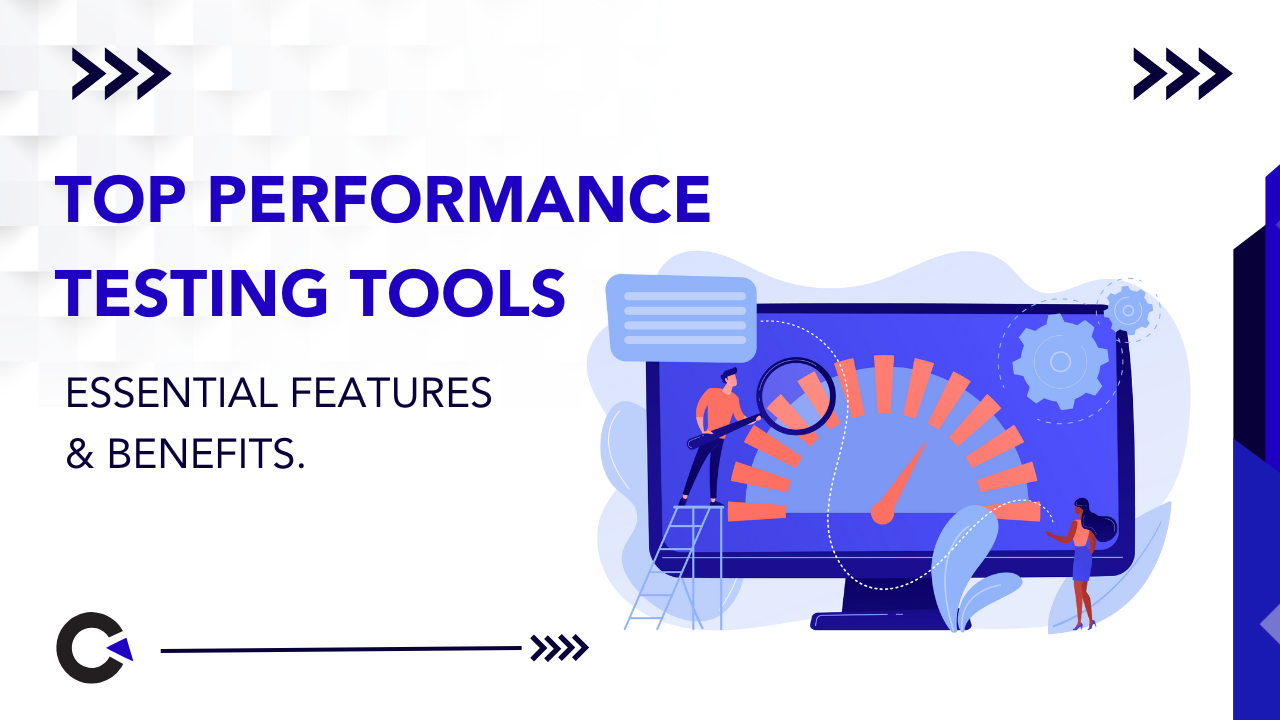
by admin | Jan 13, 2020 | Mobile App Testing, Fixed, Blog |
Mobile app performance testing has become indispensable, and organizations need to test for it even if they don’t have a dedicated mobile application. Here are a couple of statistics to understand why this is so:
- 30% of mobile phone users will switch to another app/website if they aren’t satisfied with the
functionality
- but the other 70% will shift due to long load times of your app
To perform mobile performance testing that consistently delivers an extraordinary app experience for your end-users. Tick off every point below to stay on top of things with our ultimate checklist:
Position objectives with business goals and requirements by identifying which elements of the app drive positive metrics and experience.
Identify Key Performance Indicators (KPI) for your app’s performance and verify goals when initiating the testing like Average Request (AR) per second, AR Response Tim (RT), maximum RT, average throughput, error rate, etc.
Build a testing suite and work directly with the base codes so that you don’t overlook bugs or bottlenecks. Your developers will identify parts of your app that should be tested and also design your tests for a comprehensive understanding of the same.
Execute and prioritize test cases for every combination so that you can save time and costs. Use KPIs and behavioral analytics to determine these combinations.
Mobile traffic peaks during load testing will affect the entire application, and you should consult your team and check the analytics platform to make sure they correctly reflect the proportions of mobile and web users.
Your testing environment and end-user experience should be realistic by utilizing device simulations. Take into account parallel connections because mobile networks, devices, and applications enforce different policies wrt how many functions at a particular time. A customized user-agent header in your scripts ensures that the web/mobile server is transmitting the correct content to all the different devices.
Mobile phones access servers over third-party carrier networks, and this varies based on speed, latency, bandwidth, etc. Network virtualization will help imitate the network characteristics that mobile phones experience.
Mobile users could be accessing your application from various geographic locations. Depending on their location and connectivity, your users could experience multiple levels of performance. So based on historical data, your testers should run location-based load tests through the cloud system.
Record your test case scenarios from mobile devices to arrive at an accurate test result. This real-time recording when conducting mobile performance testing is essential when your web app can be recorded from the browser.
Engage end-user experience by testing on real devices and conduct load and functional testing on actual devices. Measure rendering time that you can correlate with backend times against the frontend of your app.
Testing in production is essential, and your test environment should resemble your production environment.
Today’s economy is driving people into becoming more dependent on their smartphones, so we shouldn’t skimp on mobile performance testing for our apps and websites. You should test your app/web performance for mobile user’s applications. Keep this checklist handy and have your testers adhere to it to deliver exceptional application performance successfully. Irrespective of your mobile user’s device, network condition, or location.
If you’d like assistance with your mobile performance testing strategies, don’t hesitate to hire a performance testing services company like Codoid. We can help you to decide which tools you’ll need to delight your users.

by admin | Jan 14, 2020 | Automation Testing, Fixed, Blog |
Lemoncheesecake is a very well known Python testing framework. As a test automation services company, we have evaluated this framework for one of your automation testing projects. After the proof of concept stage, we decided to use lemoncheesecake framework to write automation test scripts. Initially, BDD support was not available. However, now you can use behave BDD framework in lemoncheesecake. In this blog article, you will learn how to write BDD tests using lemoncheesecake and behave frameworks.
Step #1: Installation
To setup BDD using behave and lemoncheesecake, you need only two dependencies (behave and lemoncheesecake packages). That’s it.
pip install lemoncheesecake
pip install behave
Step #2: Setup LemonCheeseCake Project
Once the required dependencies are installed, you need to create LemonCheeseCake project. There is a command to do that. Run the below command. It will create LemonCheeseCake (LCC) project for you.
Step #3: Create a Feature
Create ‘features’ folder inside ‘myproject’ folder. Create a feature file inside the features folder.
Feature: LemonCheeseCake Demo
Scenario: Demo Scenario
Given I fill login details
When I click login button
Then I should see Home page
Step #4: Step Definition
from behave import *
import lemoncheesecake.api as lcc
from lemoncheesecake.matching import *
@given("I fill login details")
def step_impl(context):
lcc.log_info("Pass")
@when("I click login button")
def step_impl(context):
lcc.log_info("Pass")
@then("I should see Home page")
def step_impl(context):
lcc.log_info("Pass")
Step #4: Create environment.py
Create environment.py inside myproject folder to install BDD hooks from behave.
from lemoncheesecake.bdd.behave import install_hooks
install_hooks()
Step #5: Run
behave features/demofeature.feature
Once the execution is complete, you can find LCC HTML report in reports folder. The best thing about LCC is reporting. Your team will love it once they start getting reports from LemonCheeseCake framework.
In Conclusion
Why does one need to integrate behave with LCC? We as a software testing company, write BDD and non-BDD automated scripts using Java, Python, and JavaScript languages. Let’s say for instance if u wish to write automated test scripts for data quality checks and UI validations in a test automation framework. Then LemonCheeseCake and behave combination is the ideal choice. LCC framework is gaining popularity among automation testers. We hope that you have gained some useful insights from this article. Every other day, we publish a technical blog article. Subscribe to Codoid’s Blogs to get our updates on the recent technical developments, feel free to contact us for your automation testing needs.

by admin | Jan 15, 2020 | QA Outsourcing, Fixed, Blog |
Do you know how to maximize your software testing efforts? Are you accurately evaluating the results of your software testing? You should hire an independent software testing company to help you achieve your business goals. Since they are in the software testing industry, these companies will have the necessary expertise and experience to deliver a flawless software product. While deciding which firm to outsource your software testing to keep in mind the following tips:
Decide whether you need a team of testers or a specialist QA team for a one time project or for continuously testing all your projects. Depending on this, you will be able to finalize the duration you want to hire the software testing services company. So, is it better to consult testers separately or hire a complete team to devise your business strategy? If you can answer this question, you will be on the road to success by making the right decision for your company.
To decide if single-time service or a long-term contract would work better for your software testing requirements, list down the following factors:
Size – You should first determine the number of people you will need in your QA team and then hire a testing team from a best QA company.
Location – Think about geographic location, which city or country do you want your team to be located in is an essential factor and will help you shortlist options.
Price – The location impacts the costs that leading QA companies charge. So set a budget based on what you are willing to spend wrt software testing.
Culture – Whichever software testing company you eventually hire, ensure their values are aligned with yours.
Communication – Check their communication style and work ethics.
Does the QA testing company emulate your business values?
Always assess your competition and choose a software testing company based on their uniqueness and test their services before you decide which one of them will be best for checking your company’s software.
Verify the company before employing them by doing a thorough background check on their validations and also check with their prior clientele if possible to see if they will vouch for them. It will help you make an informed decision of whether you want to employ them for your software testing services.
You should also note that not all software testers work in the same way, so you should test that they are aware of the latest tools and technology. Their expertise should match with your software testing requirements.
Both testers and developers are needed on your project to ensure a perfect launch for your software product. While your developer needs to have significant proficiency in writing code as well as superior programming skills, your tester should be proficient in communication and have in-depth knowledge of the system being developed. Developers create prototypes, and testers check them until they function. Any bugs found are reported to the development team to be fixed. That’s why the right software testing company will be able to guide your product into shorter timelines and higher profit margins because errors are tackled immediately as they arise.
As one of the top software testing companies in the industry, Codoid can help you do the necessary research and join you as your software testing company.

by admin | Jan 17, 2020 | Automation Testing, Fixed, Blog |
Most companies are affected by some problem or the other in new test automation services projects. Keep such windfalls in mind and build stable automation frameworks and ensure a collaborative team effort and own your automation. For automation to be successful, companies should approach it with realistic goals, the right attitude, and a willingness to make it work. Here are eight reasons your automation project can fail:
Unable to describe individual business goals that need to be solved:Return On Investment (ROI) should be understood if you are running automation tied to a business goal, then business leaders will stay invested. Use an open-source tool and hook it into your build server and spend time making your project feature-rich by writing test cases that are aligned to the same business goal.
Automation should be treated as a timed activity and not a process:Make sure developers who build the automation framework hand it over to a competent technical QA team to carry forward. Automation is a software project and should be flexible and easy to maintain. Continuous work needs to be done to update the framework, like new updates, features, and requirements. Most frameworks are tied into other systems like build, metrics, and cloud services, so keep it synced as it evolves.
A team creates it without sole responsibility for standards:Slower test case development by a smaller team that builds in redundancy and regularly reviews and gives feedback to produce quicker value to the project. This team checks requirements, understand business goals, and builds infrastructure to drive the project forward. With strong leadership, an approved roadmap, and strict quality controls, the team should be confident in their tests and its ability to produce reliable results. Each test should be reviewed to ensure it fits, and the team’s QA engineers should be autonomous.
Understand what to and what not to automate:It is imperative to understand that it is good to automate certain functionalities of a webpage and that some scenarios are better tested manually. Only automate stable aspects of your app or web product that is not prone to change but needs to be continuously retested. Save valuable testing effort by automating such repetitive tasks and ensure testers spend time performing exploratory testing.
The team isn’t technically skilled enough to handle the project:Testers should have a certain level of technical expertise to do automation the right way. Such QA team members can be expensive, and not all companies can afford to hire such automation engineers. So hire a few technical experts, but if it isn’t an option, invest in a tool that can help you automate the processes.
Lack of visibility around automation techniques:To be more visible, create an automation document listing all features automated, modules covered, and framework set up. Your method of automation should be clearly defined for the entire Software Development Lifecycle (SDLC). Automation tasks need to be treated separately to make them easier to manage. Make the results visible to the whole team via dashboards and discuss daily progress in team huddles. Conduct sessions that cover different trends, ethical practices, and tools. Make your automation a collaborative effort by involving the complete team in planning and writing it.
Check the testability of the application:Build an application that is easily testable from all (unit, system, integration, and acceptance) levels. Don’t build complex applications that cannot be tested and ensure the testability of a story, feature, or requirement during backlog sprucing, and sprint planning meetings before the development begins. It will alleviate problems later in the SDLC.
Vague automation goals:A robust automation framework seamlessly integrates with Continuous Integration/Continuous Delivery (CI/CD) pipeline, is easily maintainable because it gives quick feedback and runs consistently. Identify two or three high-level functionalities and collect input from automating and stabilizing them first. Separate your automation suites for smoke tests (run after every code check-in) and regression tests (run daily and covers different functionalities).
In summary, these common reasons that cause automation to fail need to be avoided for a successful automation implementation. Keep your projects focused on increasing ROI and business value and hire a highly skilled team or test automation company to ensure a smooth transition. Automation testing companies, like Codoid, can help you in this respect.

by admin | Jan 20, 2020 | Software Testing, Fixed, Blog |
Nowadays, everything is becoming software-defined, and the focus is on developing better products faster. When you push for faster development, there is a shift in quality, and you may end up with products that lag or have bugs in them. In a world motivated by technology, reliable quality, and security assurance is vital to beat the competition. The software development lifecycle process has gone through a massive change over the last couple of years, and developers today are considered the superheroes.
The best QA Companies will develop applications or websites using the latest technologies to make end-users life more comfortable. Developers are highly invested in creating products, not just creating code. They try to develop products that induce value into the lives of end-users. Many companies are perplexed with this question “Are great software products created due to applicative developers or theoretical testers?”. The development of a great product, whether an app or website, calls for a group of talented individuals collaborative efforts. It is vital that development and testing be kept at the forefront, and it must define the end-user needs. Great user experience will impact marketing and result in positive sales figures.
If we take a look at the changes in the software development landscape, we will realize there is a real need for better apps/websites to be launched in the least time possible. The adoption of Agile and DevOps methodologies is to speed up processes and precisely align with business goals. Constantly evolving consumer demands have forced businesses to release software products quicker. Companies can measure their success directly proportional to their ability to release software updates. Development teams are always pressured to perfect software and its incremental updates.
Your consumer base is more used to digital experiences, and they expect better connectivity and code quality. Developers are expected to create smarter apps that include the latest technologies, such as Virtual Reality (VR) and Personal Assistants (PA). These have the potential to transform workplaces and make daily tasks easier. Your developers need to know what the target audience wants and how the application can fulfill this demand. To create code that makes a difference in end-user life is the key here. Since products are designed to be more comfortable to use, they have become harder to build, and developers focus on code that has interlinked parts that render themselves for iterations with ease. Make sure your developers are abreast of the latest technological and business trends so that they can create the best products which will survive the intensity of today’s competitive marketplace.
Developers are given more importance while delivering timely software or updates, and the role of testers have simultaneously evolved. To beat the competition, the focus on testing software has become a must-have and no longer remains as an exercise at the end-of-development. To bring a competitive advantage to testing DevOps and Continuous Delivery (CD) should be integrated into the development process for faster deployment. The speed of testing should meet the pace of development to be able to release products and updates on time. Testing should be a continuous process throughout the Software Development Lifecycle (SDLC) to be able to catch bugs early and fix them, thereby reducing costs to the company.
While developers are crucial to proper software development, your testers are the ones who decide the real strength of your software. A good Software Testing Services Company will identify various ways to break down your software product so that there is end-user satisfaction. QA testers use test automation and technologies like artificial intelligence and machine learning to make the entire testing process simplified and faster. Any broken code found during the testing phase needs to be addressed immediately to prevent negative product performance and remove product vulnerabilities. Testers are thus the superstars who dare to rise to the occasion and elevate the barometer of the quality of your software product.
Both roles, developers and testers, work towards the same goal of creating quality software products that beat the competition in terms of functionality, ease of usage, and relevance. Although, new development methodologies like DevOps intertwine these two roles and today developers and testers no longer function isolated but work together in achieving the set goals of the company. Do you have a great development team? Are you looking for an equally strong testing team? Let Codoid, one of the top QA Companies , be your partner while you wage a software war against your competitors. Developers and testers are superheroes fighting the same quality war in the software universe. Despite their differences, developers (Thor) and testers(Ironman) were equally needed as they belonged to the same team. Battles are won when you fight for the same side.

by admin | Dec 10, 2019 | Automation Testing, Fixed, Blog |
Automation Testing success can be measured using its metrics. Analyzing only the last execution results will not help you to determine test automation success completely. In order to achieve better results, you need to save all the historical execution results to enable automation testing metrics. For example: if you want to know how many times a feature is passed and failed, then you will have to ingest each execution’s test result in a database and create a web dash board. So that your team can see what benefits we have reaped so far from automated testing.
As a leading automation testing company, while formulating test automation metrics we consider the following two crucial aspects.
- Automation Testing Benefits perspective.
- Script Quality Perspective. if an automated script keeps on providing false-positives, then it will be an indication for automation testing team to make the script robust enough to stop false positives. Let’s see all the required automation testing metrics one by one.
Pass and Fail count from last execution helps to conclude the testing. However, if you get more failures, then automation testers should troubleshoot the failures. If a failure is a false positive, then check how many times the script failed in the past and mark it for the update. When sharing the historical failures count, your team only focuses is to stop false positives.
Automation testing starts from the senior management. They are the one who approve the budget to kick-off automation testing project to reap benefits from it. As soon as the project is started, sharing how many scripts are converted from manual to automation on weekly basis is a vital information for the management team. Consider, 30% of test cases are not automated due to various reasons. your team can plan how much effort is required for manual regression testing for the non automated test cases.
If you have automated test suite, then it should be utilized as much as possible for various testing activities. No. of executions is a great metric for your team and management. Once the regression testing is taken care by automation, the testers from your team will get more time to conduct exploratory testing and to test new features, stories, & other impacted areas manually. No. of times the automated test suite executed metric is an input to your management team to measure the success of test automation.
This metric is useful to enhance scripts quality. How? If you are capturing failure count for Feature, Scenario, and Step level, then you can easily identify automated scripts which are failing often. When your test automation suite is robust enough, then it will add more value to your testing.
Execution duration metric is an input for your team and management. Let’s see how is it valuable to the management team? If everyone in your team is aware of how quickly your automated smoke and regression test suites complete the execution, then your team can take important decision on how many hours/minutes do we need to show up maintenance page during product release deployment? And how many hours do we need to wait to complete the regression testing on lower environments? Even your team can revisit the scripts to fine tune to reduce the execution time.
We recommend you not to execute your automation testing scripts without collecting metrics. Doing so will be a great value add to your project. You can capture many metrics. However, as a first step, capturing the test automation metrics which are mandatory and useful is important. As a test automation services company, we collect metrics to make the effort visible to clients, and the management so as to improve the scripts’ quality.



























